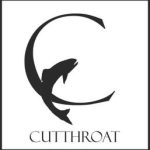Cutthroat – Spring 2006

A cutthroat is a kind of trout — and this must surely be what the journal’s name refers to, given the beautiful painting by Albert Kogel, “Rush Hour Fish,” on the cover—although it’s hard not to think first of its better known connotations (a murderer or someone who is a ruthless competitor). So, it seems fitting that the poetry and fiction in this journal tend to tackle what I’d call “big, serious themes”: the war in Iraq, the incidents of 9/11, the aftermath of major illness, literacy, Vietnamese war orphans, the effects of the one-child law in China, the violence at Columbine high school, child abuse. “Cutthroat Discovery Poet” Elizabeth Gordon’s work is characteristic of the journal’s predilections in terms of subject matter, though her style is more conversational than much of the work presented here. My favorite of her six poems is “Game Over, President Tells Iraq”:
I remember my life like it never happened
the beautiful city of my birth
river city colonial city city of self-immolation
my parents’ lovemaking they slow groans of continents
the dog tags pressed between them
the copter hovered above them
slicing
the ghosts of my ancestors
smell of chemicals and refuse
diesel and perfume
fine candies melting on the tongue
There are plenty of stars in this issue, as well as worthy newcomers, including Joy Harjo and Rick DeMarinis (whose own work appears alongside the work of the poetry and fiction winners of awards in their names), Marvin Bell, Judith Barrington, Dorianne Laux, Kelly Cherry, and Naomi Shihab Nye, among others. Donley Watt’s fiction choices, stories by Tehila Lieberman and Pamela Hawthorne, are especially appealing. [www.cutthroatmag.com/]
Cutthroat Volume 1 Number 1, Spring 2006 reviewed by Sima Rabinowitz
